A number of Swiss history books all recount the story that Werner, the Baron of Attinghausen, owned a castle named Schloss Zumbrunnen in the early 1200s which he gave to his son Walter in the year 1209. Walter adopted the name of the castle as his own surname. But where was this castle that became the namesake of the Zumbrunnen family?
Schloss Zumbrunnen is long gone now, and its site is uncertain, but there are two leading possibilities for where it might have stood.
Option 1: On a Hill in Brunnen, Switzerland
A number of books about the town of Brunnen, Switzerland, say that the Castle Zumbrunnen once stood upon a small hill close to the shore of Lake Lucerne. The town of Brunnen is also identified in Hans Jacob Leu’s 1750 Swiss lexicon. The site is not hard to find today, and is circled in the aerial photo below. For many years, the site was the location of a hotel called the Park-Hotel Hellerbad (you can find many historic postcards of the hotel online). Today, the site is the the location of the Aeskulap Seeklinik, an upscale lake-side clinic where people go to relax for treatment of stress-related illnesses such as burnout, depression and sleep disorders.
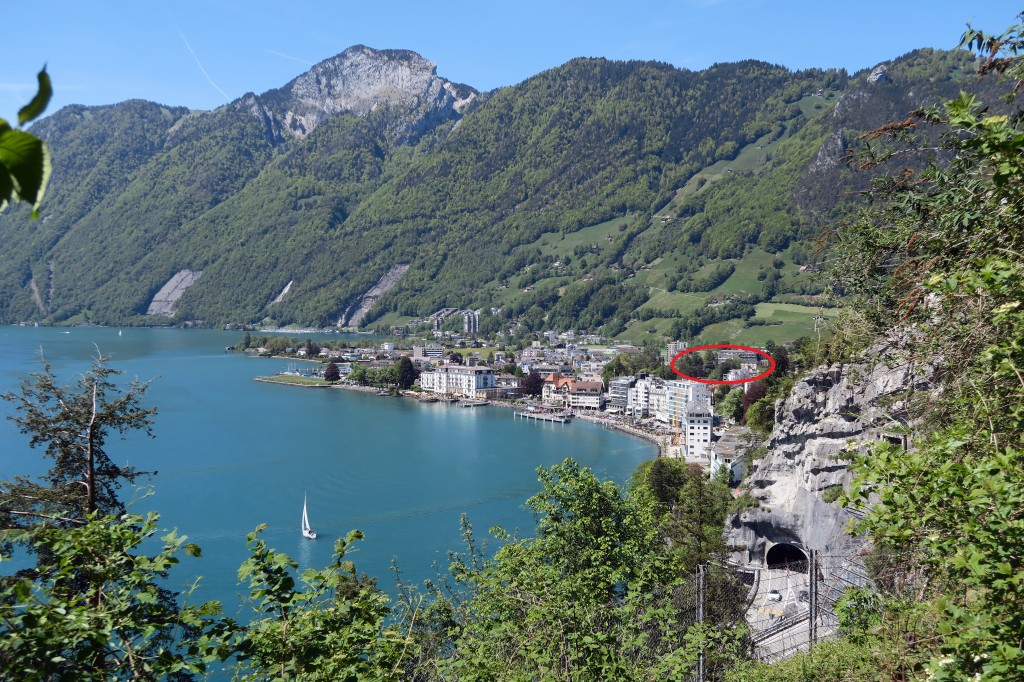
Aerial photo of the village of Brunnen, Switzerland. Some sources say that the Castle Zumbrunnen was located atop the small hill circled in red, where a tuft of trees is growing.
Here’s the location on Google Maps:
A journal article from 1906 on the morphology of Brunnen said of this hill:
According to tradition, a castle was said to have stood here, the castle and courtyard of the noble Zumbrunnen family, which in 1209 was held by the family of Attinghausen through inheritance. [The historian] W. Oechsli mentions the site in 1891 in his book “The Beginnings of Switzerland” but gives no corresponding evidence. In a discussion of the Zumbrunnen family from Liebenau, the hill in Brunnen as a castle site is not mentioned. If such had existed, it should be expected on the dominant hill of the time. On the southern entrance of the Park-Hotel, on Gersauer Street, for quite a distance behind the houses there is large rubble, which could have been taken from the castle hill. According to the present owner of the castle hill …more than 1000 cubic meters of rock have been demolished in three periods.
So it seems that, if indeed a castle once stood here, many of its stones have been carried away, used in the construction of other buildings and retaining walls and the like.
An old drawing of this spot from the year 1833, before the hotel was built and before the big shorefront buildings were constructed, shows that the hill was once quite a bit more pronounced. Even at the time of this drawing, the Castle Zumbrunnen that once stood at this location had likely been abandoned for hundreds of years, perhaps 500 or even 600.
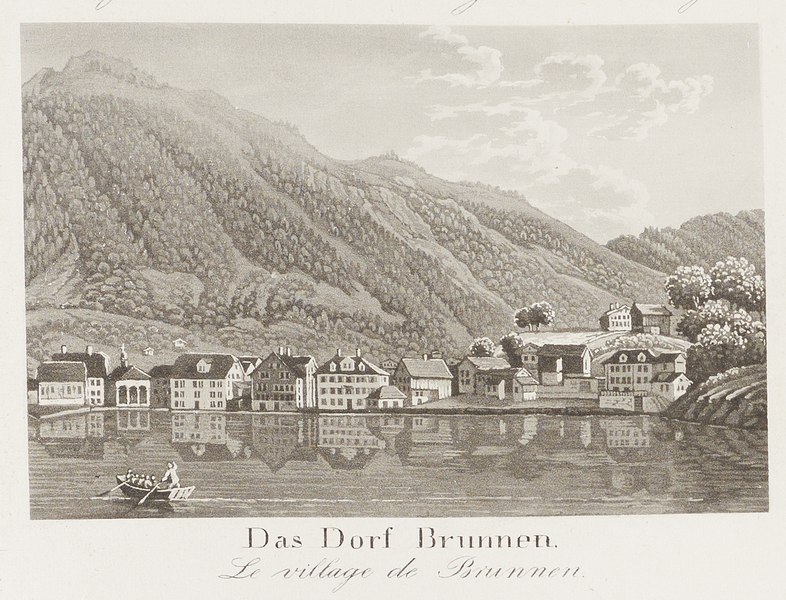
The hill on the right, with a large house and barn, is associated with the site of the Castle Zumbrunnen.
The stone rubble upon a hill is good and logical evidence that a castle once stood here, but it’s not certain that this was the same castle as Castle Zumbrunnen. For one thing, if the family possessed a mighty castle here, why were all their feudal lands and other early historical evidence place the family in the Canton of Uri?
Uri and Brunnen are not far from each other. The castle was originally passed to Walter Zumbrunnen, but Walter’s son Burkhard became a leader in Uri. This is just speculation, but perhaps Burkhard moved to Uri to work with his uncle Werner II, Baron of Attinghausen, and this is how Burkhard became a leader of the people of Uri. Perhaps at some point, they sold the Zumbrunnen Castle to acquire more lands in Uri.
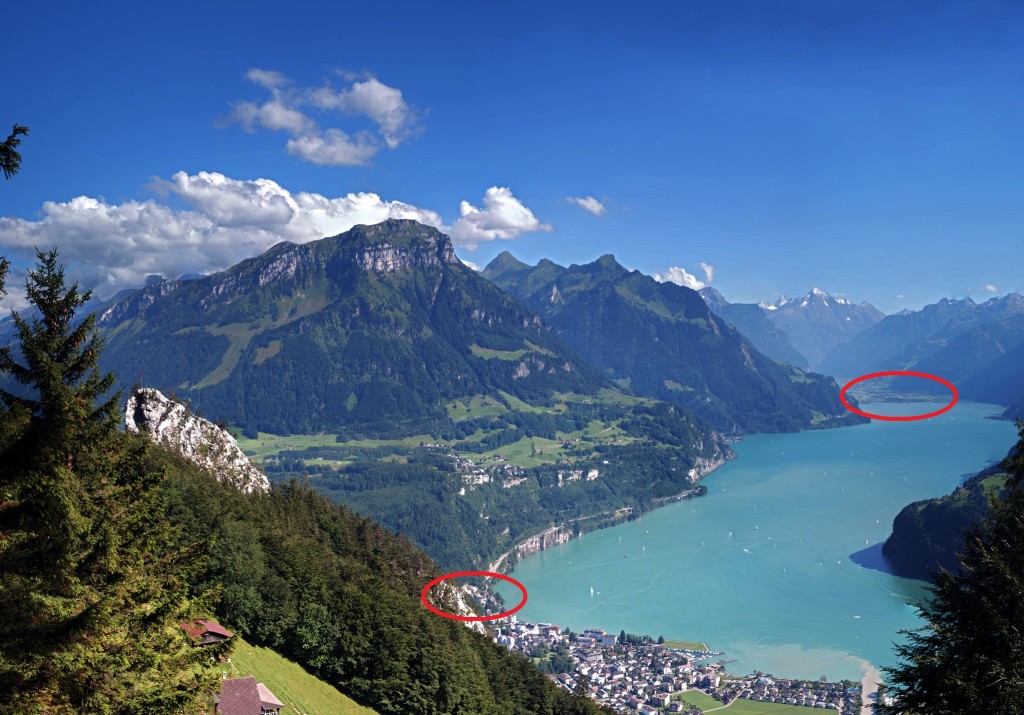
Brunnen (bottom left circle) and Uri (top right circle) are not far from each other, and can be reached via a quick sailing trip on Lake Lucerne, or via a roughly 9 mile trail along the edge of the mountains.
Option 2: Near a Fountain in Uri
While it’s fun to imagine a mighty castle upon a hill in Brunnen, the other possibility is that the “Schloss Zumbrunnen” was a more modest stone house near one of the fountains in Uri. (This location was cited in an 1830 book on Swiss castles.) The name “Zumbrunnen” is somewhat more suggestive of this possibility. “Zum” means “to the” and “Brunnen,” in addition to being the name of a village, also means “fountain” or “town well.” If the name referred “to Brunnen” the town, then in German it would typically be rendered “Zu Brunnen” rather than “Zum Brunnen.”
We also know the Zumbrunnen family in Uri associated their name with fountains. They used a picture of a fountain on their coat of arms. When they were in Italian speaking regions, they even sometimes translated their name to Fontana, the Italian word for fountain. (This is not definitive proof, however, as many Swiss liked wordplay and puns.)
There are a number of ancient fountains in the town of Altdorf, Uri. These would have been logical sites for a stone house too, and make sense as a division of inheritance, as they are across the river from the Attinghausen Castle. Here’s an old fountain near the hospital in Altdorf, Uri. A number of the Zumbrunnen were later involved with the hospital in Uri.
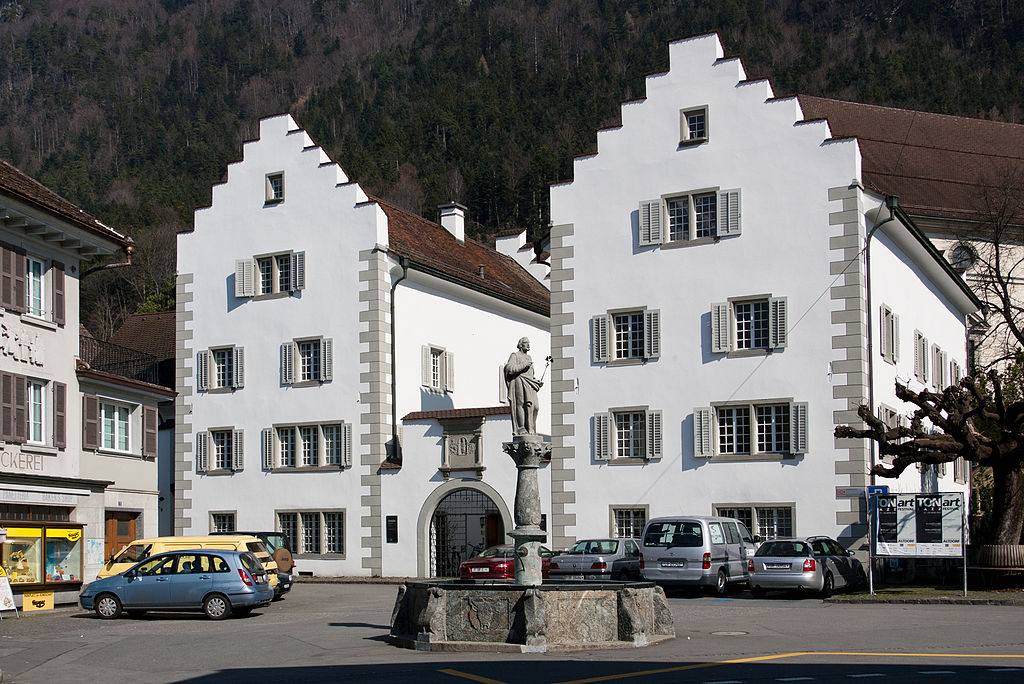
A fountain outside the hospital in Altdorf, Uri.
Roland Zumbuehl via
The most likely candidate, however, is the old fountain in the main town square of Altdorf. A famous status of William Tell was built next to the fountain. This fountain has since been moved, but you can see it in this old postcard. It closely resembles the fountain that the Zumbrunnen family later used in their coat of arms.
If the Zumbrunnen Castle was, in fact, a more modest stone residence in Altdorf, it would explain why the earliest historical records of the family all point to Altdorf. One site in particular is a possibility: there is a road called Zumbrunnenweg, only about 1,200 feet from the town square, that could have been the location of this stone residence.
This is likely not the last word on the Castle Zumbrunnen. Future research may be able to shed some light on these two locations. If the castle was located in Brunnen then what became of it? Why did it leave the family and when was it ruined? Did some members of the Zumbrunnen family stay in Brunnen? If not for a historic Zumbrunnen residence, then why is the street in Altdorf, not far from the fountain, known as Zumbrunnenweg?
Sources
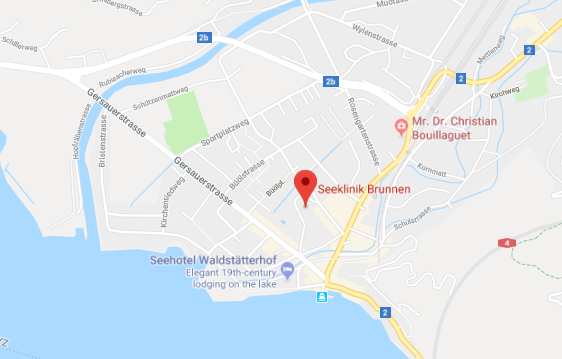
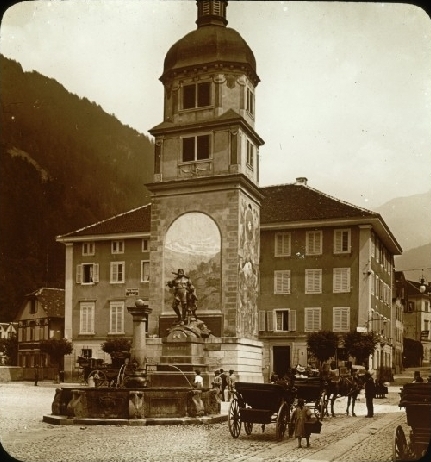
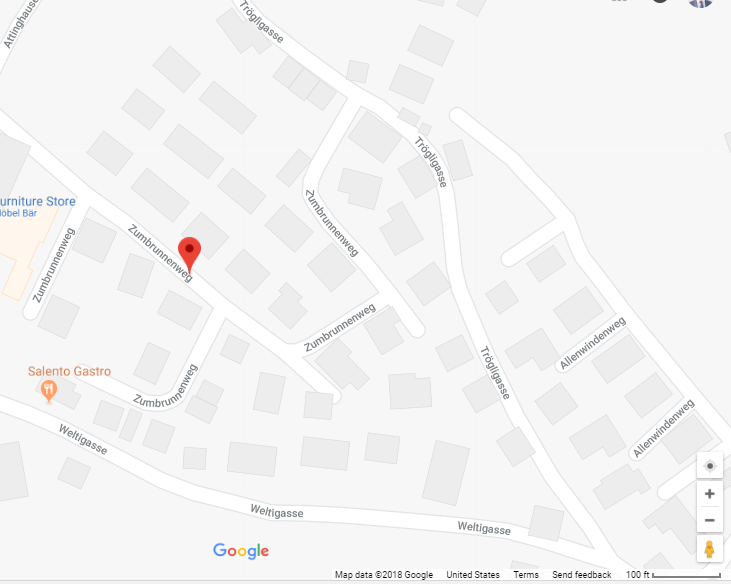

Leave a Reply